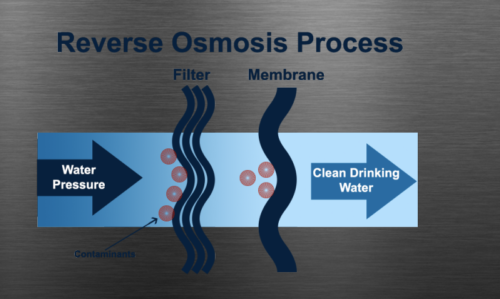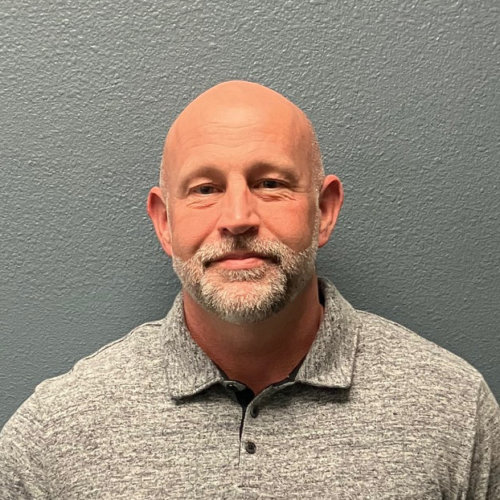The Best Way to Ensure You Have Clean Water During a Quarantine
July 31, 2020
During this uncertain time when states across the country are in varying stages of quarantine, ensuring you have necessary supplies, like clean water, can be stressful.
While you can purchase bottled water from the grocery store or have water delivered to your home via a water delivery service, the best way to ensure that you have an unlimited supply of quality water is to install a Reverse Osmosis system.
A Reverse Osmosis system can turn your tap water into purified water, providing you with an endless supply of filtered water directly from your sink.
Below, we’ll go into more detail about how Reverse Osmosis systems work, so you can get a better idea of whether it’s a good option for your home. We'll also explain how pairing a water softener with a Reverse Osmosis system can provide you with water that's safe for both drinking and for your plumbing appliances. If you’d rather speak with a professional directly, we’d be happy to help. Learn more about our water filtration installation process or…
What is a Reverse Osmosis system and how does it work?
A Reverse Osmosis system is a point-of-use system that is usually installed under your kitchen sink and provides pure drinking water via your sink faucet.
According to the CDC, Reverse Osmosis systems can help clean your water of a variety of contaminants including:
- Certain types of bacteria like Salmonella, E. coli and Shigella
- Some viruses, like Hepatitis A, Rotavirus and Enteric
- Types of protozoa like Giardia and Cryptosporidium
- Some chemical contaminants like chloride, copper, lead, arsenic, fluoride, sulfate, calcium, magnesium, nitrate and phosphorous.
So, how does a Reverse Osmosis system work?
Reverse Osmosis systems send your home’s unfiltered water work through a series of filters and a membrane that removes a variety of contaminants, leaving you with clean drinking water.

Step 1: Unfiltered water is sent through a sediment or pre-sediment filter, which removes larger particles like sand, dirt and salt.
Step 2: The water is then sent through a pre-carbon filter which removes particles like chlorine, mercury, copper, pesticides and other chemicals.
Step 3: After the water has been sent through the sediment and carbon filters, it’s sent through a semipermeable membrane, which has very small pores that water molecules can fit through but many types of contaminants cannot. The semipermeable membrane can filter out impurities as small as certain viruses and types of bacteria.
Step 4: The water is sent through a post-carbon filter, which removes dissolved gases, odors and tastes from the water. Reverse Osmosis systems are the best way to purify your home’s water and filter it so it’s safe to drink. If you are concerned about having an unlimited supply of purified water, a Reverse Osmosis system is probably a good option for your home. Want water that's safe for drinking AND your
Want water that's safe for drinking AND your plumbing appliances?
You should consider installing a water softener in conjunction with a Reverse Osmosis system.
Unlike a Reverse Osmosis system, which filters and purifies your water, making it safe to drink, a water softening system “softens” water by removing the minerals from it.
If you live in Phoenix and don’t have a water softener, your home has hard water, which means there are a number of dissolved minerals in your water like calcium and magnesium.
These minerals can cause limescale buildup in your plumbing system and appliances, which can result in:
- Increased energy bills
- Clogs in your drains
- Damage to faucets and showerheads
- Corrosion
So, how does a whole-home water conditioning system work?
A water softener replaces these minerals (calcium and magnesium) with sodium (salt ions), which is harmless to your plumbing system and appliances.
While a water softening system does not purify your home’s water for drinking, it does provide you with softer water for things like washing dishes, taking showers, washing your clothes, etc. This will leave you with slicker water that doesn’t leave filmy minerals on surfaces, dishes, or appliances.
As we mentioned above, if you want to ensure that you have clean water throughout your home, our suggestion would be to install both a whole-home water softening system for your entire home and an RO system specifically for drinking water.
Have questions about filtering your home’s water? Contact Patrick Riley!
If you have questions about which type of system would be best for your home, we’d be happy to speak with you. We have years of experience helping Phoenix homeowners with their plumbing decisions and we’d be happy to help you too.
Get 10% off (Up to $150)

Ty Lindsay is the Director of Field Operations at Patrick Riley | Isley’s and a 15-year veteran of the plumbing and HVAC trades. In 2010, Ty earned his Journeyman’s plumbing license. He became a Master Plumber five years later and earned his Journeyman HVAC technician’s license that same year. Ty’s breadth of knowledge in plumbing and HVAC includes both residential and commercial work. He’s been a loyal member of the Patrick Riley | Isley’s team since 2016.
- Posted in:
- Tips
